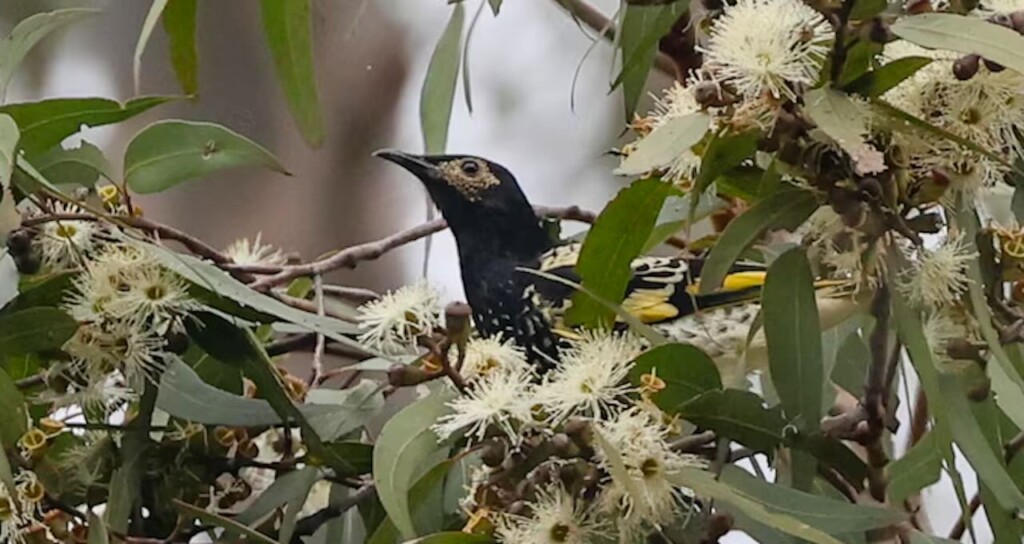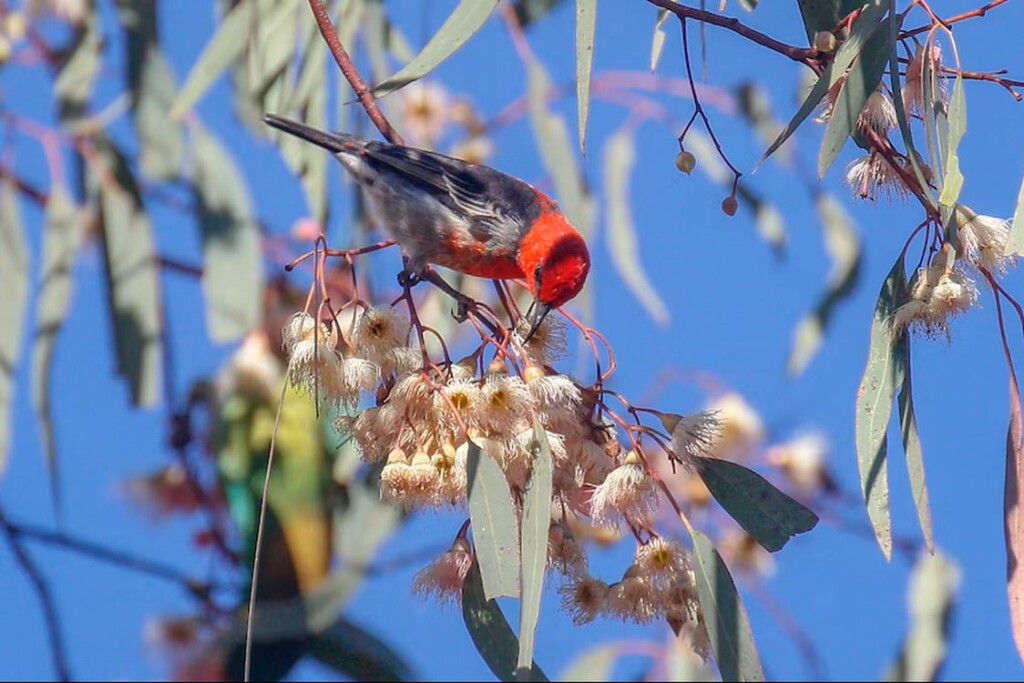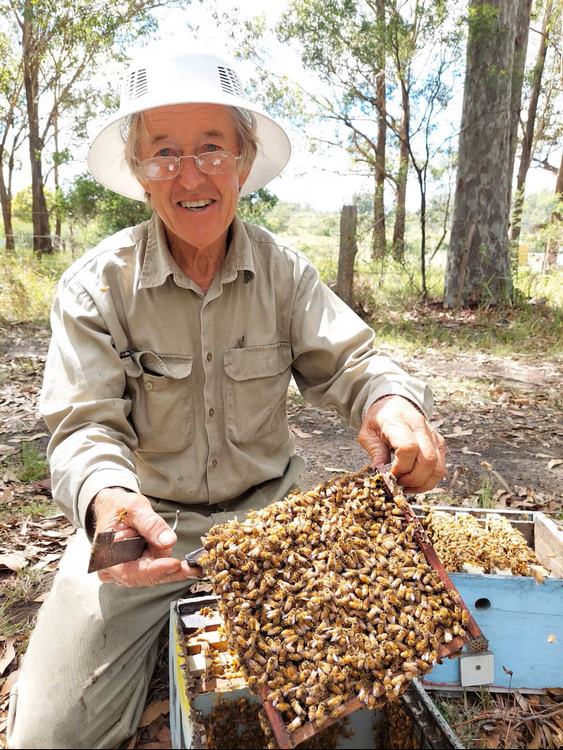 Honeyeater Bird in spotted gum blossom tree – Credit: Mick Roderick from BirdLife Australia
Honeyeater Bird in spotted gum blossom tree – Credit: Mick Roderick from BirdLife AustraliaRecent wet season rainfall along the east coast of Australia has shattered hundred-year records, but as the floodwaters recede, a feast of epic proportions seems ready to explode among the hills and valleys.
Soaking up all that water, New South Wales’ various eucalypt tree species are preparing for a mass blossoming that may all but guarantee a critically-endangered bird species’ survival.
There are some 800 different eucalypt tree species in Australia, and the regent honeyeater feeds on the nectar of several which are set to blossom during the animal’s breeding season—a perfect confluence of events that should dramatically help the beautiful yellow and black bird.
Regions including the Mid-North Coast and Hunter Valley are seeing buds on their red gum, ironbark, grey gum, white box, swamp mahogany, and spotted gum trees, and BirdLife Australia told ABC News down under that hundreds of honeyeaters and other birds are already enjoying the bonanza in places where the buds have turned to blossoms.
“To know that so many trees will be flowering from a breeding season, right through summer and winter… is significant for a critically endangered species that relies almost exclusively on nectar,” Mick Roderick, BirdLife Australia’s regent honeyeater recovery adviser, told the outlet.
 Scarlet honeyeaters are among nectar-feeding birds which benefit from strong blossom seasons – credit, supplied by Mick Roderick
Scarlet honeyeaters are among nectar-feeding birds which benefit from strong blossom seasons – credit, supplied by Mick RoderickDean Nicolle, an expert on eucalypt species, told ABC that the trees are highly adapted to extreme levels of moisture seen in Australian weather patterns.
“Some species are very tolerant of flooding and waterlogged soils and are much more drought sensitive, while other species are much more drought tolerant,” he said. “The species described [in the Hunter], like spotted gums and ironbarks… can take up as much water as they want, grow lots of leaves and then flower heavily.”
 Hunter Valley beekeeper Col Wilson – credit Supplied Col Wilson
Hunter Valley beekeeper Col Wilson – credit Supplied Col WilsonIt’s not just honeyeaters that will enjoy the blossoming bounty, but honey makers as well: bees.
MORE AUSTRALIA NEWS:
While the honeyeaters suffered through a drought that reduced their food supply following heavy rains between 2021 and 2022, beekeepers in the Hunter Valley had a varroa mite epidemic to add to the drought. Many reported substantially reduced honey harvests—but not this year.
Hunter Valley beekeeper of 45 years, Col Wilson, told ABC News that many beekeepers had suffered over the last few years, and that they are set for a season to remember, both for honey production and bee reproduction.
SHARE This Great Benefit Of An Otherwise Debilitating Flood In Australia…
Source link

